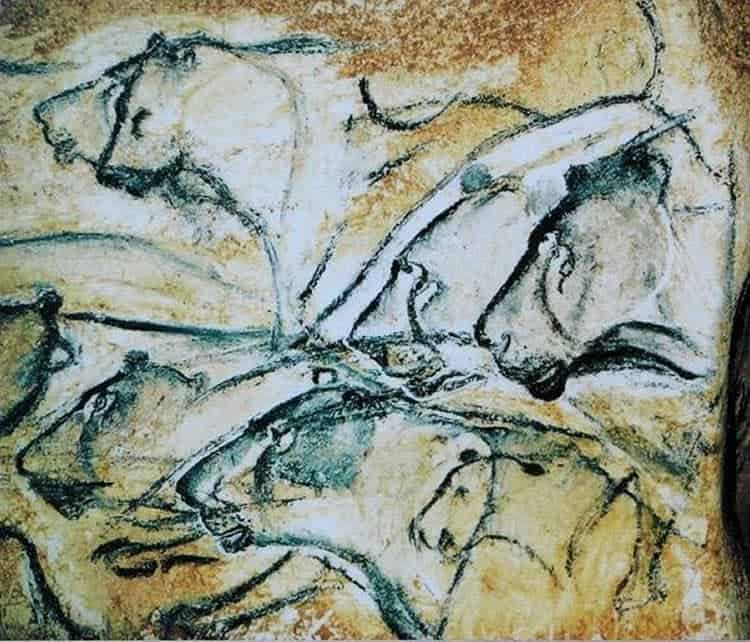Autism is still poorly understood to this day, and autism history is even more so. A University of York study sheds new light on the evolution of autism in human society. The study authors found that roughly 100,000 years ago, primitive societies weren’t shunning people with autism. In fact, they were embraced as respected specialists in their groups for their unique abilities, allowing them to play a central part in human evolution.

Autism in ancient history
Autism has always been around, as far as we can tell. Sure, the diagnostic is new, but neurodivergence has probably been around as long as humanity itself. But the way society has treated autism has changed quite a lot.
Humans are social animals. Our modern lifestyle, with infrastructure, supermarkets, and smartphones, is only possible because of how much we’ve progressed. Generation after generation, we’ve worked together, pooling our abilities to improve our collective lives. But this approach, of pooling our abilities together, hasn’t always been around.
A study now estimates that this group-oriented attitude, known as collaborative morality, emerged through a subtle evolutionary shift some 100,000 years ago. By changing the focus from a person’s characteristics to their abilities, skills, and value to the group, collaborative morality opened up a social niche for one demographic likely ostracized before — people with autism.
Rather than being left behind, the team concludes that they assumed an important role in their social groups due to their unique traits. This, in the long run, allowed them to play a major part in human development and evolution.
“We are arguing that diversity, variation between people, was probably more significant in human evolutionary success than the characteristics of one person,“ said Penny Spikins, senior lecturer in the archaeology of human origins at the University of York and lead author of the study.
Autism for hunter-gatherers
The development of agriculture about 12,000 years ago changed the course of human evolution. Agriculture enabled us to switch from nomadic hunter-gatherer lifestyles to permanent settlements and farming. But neurodivergence and autism precede agriculture by a long shot.
Geneticists believe that autism has a long evolutionary history in humans, likely appearing before the stone age. It’s hard to imagine what life would have been like for neurodivergent people back then.
Today, fields such as engineering, mathematics, and other academia attract a high rate of people with autism. In fact, some people with autism overperform in some areas. Nevertheless, in many instances, coping with autism even in the modern world is difficult at best. Presumably, autistic hunter-gatherers have it even worse.
But maybe they didn’t.
The authors of the new study argue that the traits which push modern individuals towards these fields provided a powerful advantage for the early social groups of a hunter-gatherer society.
For example, autism is often associated with heightened visual, olfactory, and taste perception, as well as exceptional memory skills (very useful in navigating the world without GPS). Asperger’s syndrome is associated with a heightened attention to detail (recognizing different plants or animals), understanding of systems (such as the behavior of prey), and increased focusing ability.
What these people lacked in social integration, they more than made up for it by sheer group utility.
“It was diversity between people which led to human success and it is particularly important as it gives you different specialised roles,” Spikins added.
Ancient advantages
In essence, they formed society’s first specialists, filling in roles that the others couldn’t perform as well. Take, for instance, the case of an elderly reindeer herder with autism from Siberia. This herder has such an amazing memory that he revealed “a detailed memory of the parentage, medical history and character of each one of his 2,600 animals.” His knowledge made a huge contribution to the herd’s management and survival, having a direct effect on the group’s prosperity and well-being. Despite being “more comfortable in the presence of the reindeer than humans,” he was a well-respected and important person in the group, had a wife, a son, and even grandchildren. A person with similar abilities would have likely received a similar treatment in a group of early humans.
However, whether or not ancient autism was regarded with this type of respect is difficult to prove.
In particular, it’s hard to find any verifiable proof of autism in archaeological records. There is no skeletal record of the condition. So it;s difficult to prove that someone was indeed autistic. There is indirect proof to be had, however, in observing how other people that differ from the norm were integrated, as well as cave art or other artifacts from which autistic behavior can be inferred.
“There has been a long-standing debate about identifying traits of autism in Upper Palaeolithic cave art,” Dr. Spikins said.
“We can’t say some of it was drawn by someone with autism, but there are traits that are identifiable to someone who has autism. It was also roughly at that time that we see collaborative morality emerging.”
Undoubtedly, there’s still much we’ve yet to find out about ancient autism and what type of role it played in society.
Hopefully, understanding these past behaviors will also pave a way for greater acceptance and understanding of neurodivergence in our contemporary societies. If the theory proposed by the University of York study is correct, then the societal role of people with autism is not only an artifact of our past but a fundamental aspect of our collective human story.
The full paper, “Are there alternative adaptive strategies to human pro-sociality? The role of collaborative morality in the emergence of personality variation and autistic traits” has been published online in the journal Time and Mind.


